VenaSeal and ClariVein – New Varicose Vein Treatments
Updated 04/24/24
Long gone are the days of painful and invasive vein stripping techniques for treating varicose veins. These techniques have been replaced with minimally invasive ablation procedures like endovenous laser ablation and radio frequency ablation. These procedures are highly effective, minimally-invasive and are much easier to recover from. Now some even newer procedures have become available, and they look to remove the worst part of ablation procedures, the needle pokes.
Non-Thermal Non-Tumescent Techniques
VenaSeal and ClariVein are emerging as the new non-thermal and non-tumescent techniques, though they go about it in different ways. First, let’s understand what non-thermal, non-tumescent technique means.
Ablation procedures like laser and radio frequency close veins using high temperatures. This causes as scarring response, closing the vein and allowing the body to absorb the scarred vein over time. These techniques use heat upwards of 120 degrees celsius. This requires the use of tumescent anesthesia. Tumescent is a dilute lidocaine mixture that is injected around the vein to anesthetize the area and to provide a heat-sink so surrounding tissue is not damaged during treatment. Tumescent is administered through multiple injections up the leg. Though most patients tolerate the injections very well, it is certainly the ‘worst’ part of the procedure. Both VenaSeal and ClariVein do not use heat to close the targeted vein, therefore tumescent is not necessary. Now, how do these treatments work?
VenaSeal
VenaSeal uses glue, much like the skin adhesives used to close wounds and incisions. The physician first accesses the vein like starting an IV. Yes, this procedure isn’t completely needle free. Once the vein is accessed a small catheter is advanced to the top of the target vein. Ultrasound is used to guide the catheter to the proper placement and to ensure the glue is properly applied. The physician then drops tiny amounts of glue in measured intervals down the length of the vein. After each drop of glue, pressure is applied to glue the vein closed. Once the vein is completely glued, the catheter is removed and a bandage is placed over the access site. Two-year closure rates for VenaSeal are nearly equal to Radio Frequency Ablation, making it a highly effective procedure.
ClariVein
ClariVein uses a technique which is already commonly used to treat varicose veins, sclerotherapy. Sclerotherapy uses a sclerosing agent that damages the inside of the vein causing scarring and closure of the target vein. Sclerotherapy works well on smaller varices but is not the optimal treatment for bigger veins like the saphenous veins. That’s where the ClariVein catheter comes in. The catheter features a rotating tip that disperses the scleroscant 360 degrees inside the targeted vein, allowing successful treatment of larger veins. The physician gains access to the vein through a needle. Then the catheter is advanced to the top of the vein. Once in place the This method does not use heat, therefore no tumescent anesthesia and needle sticks are necessary. ClariVein is highly effective with comparable closure rates to thermal ablation and VenaSeal.
Here at IVC®, we offer the latest in minimally invasive varicose vein treatment, including VenaSeal and ClariVein. No matter what treatment option you decide on, you can expect friendly, quality care, and highly effective varicose vein treatment.


